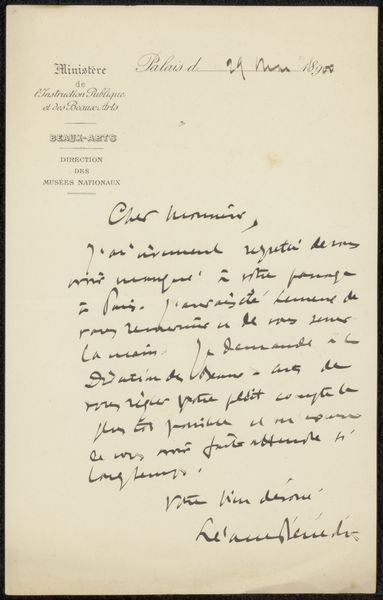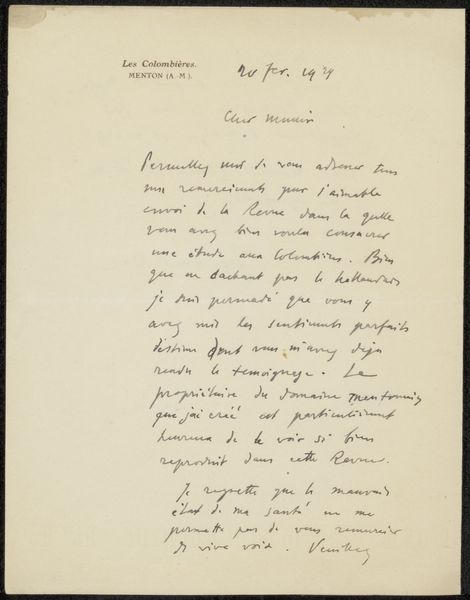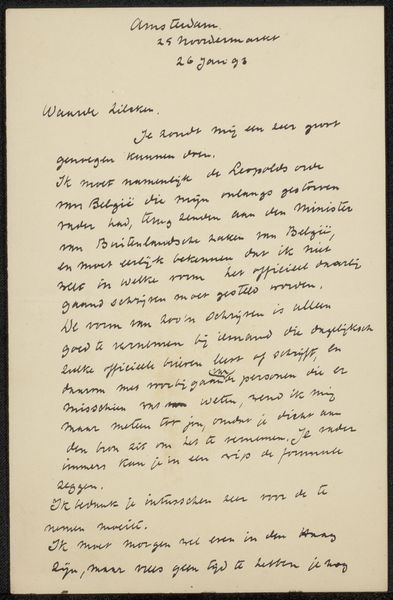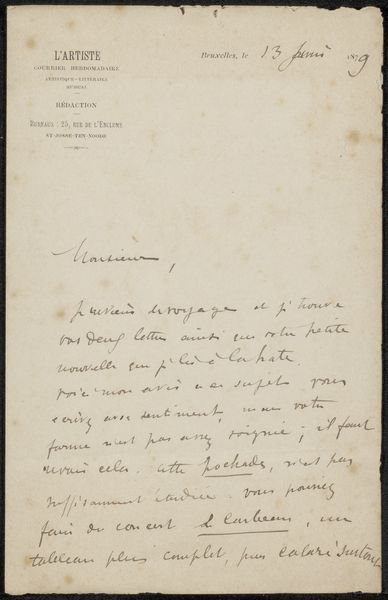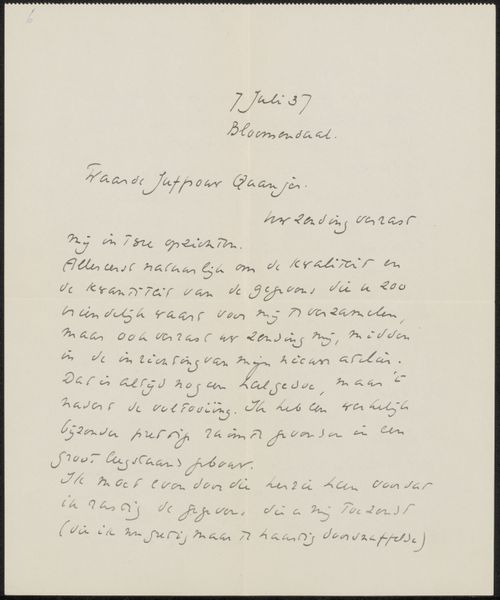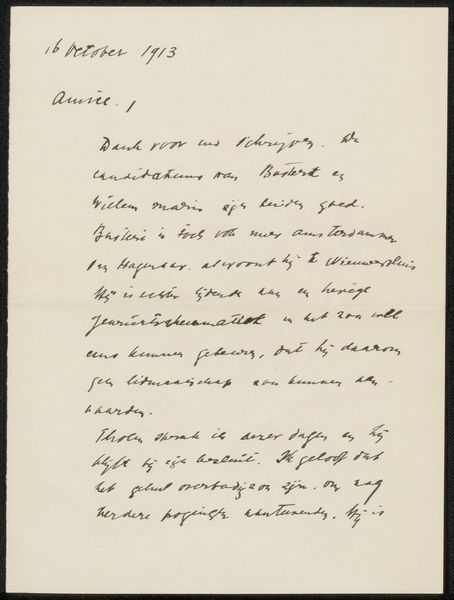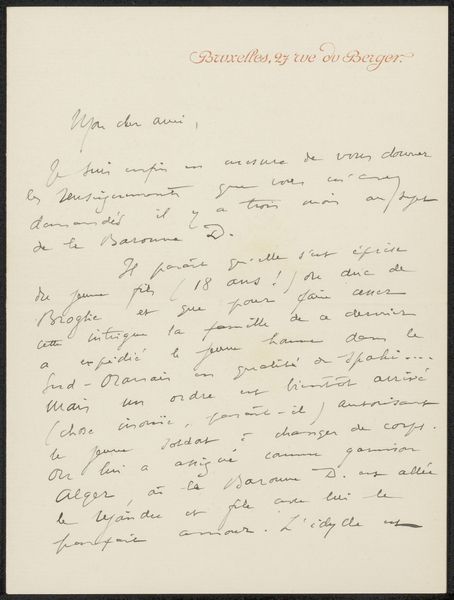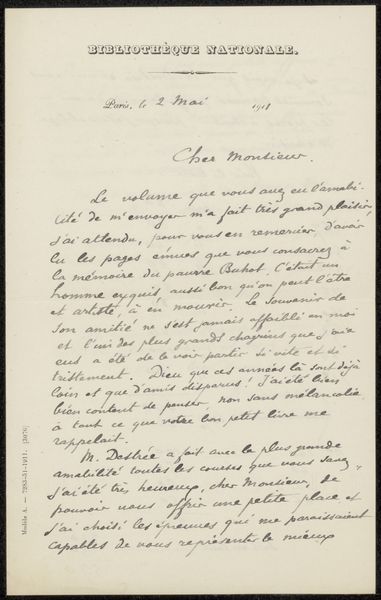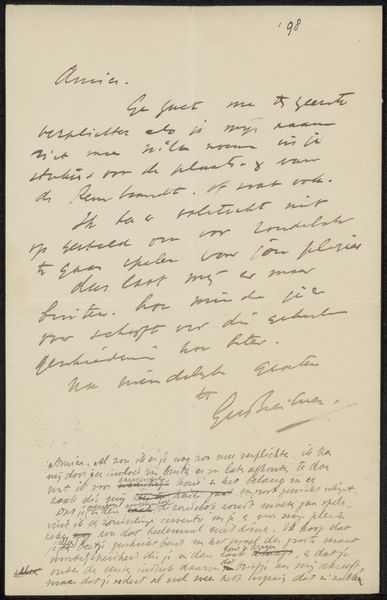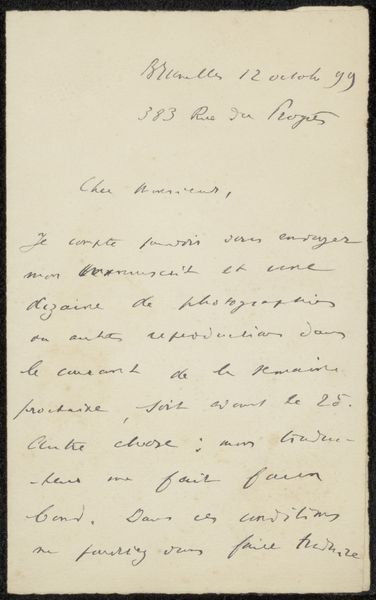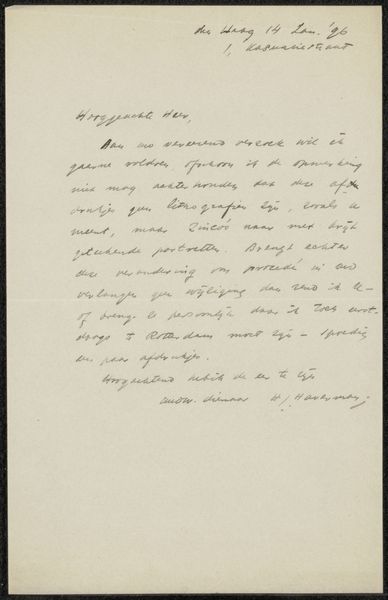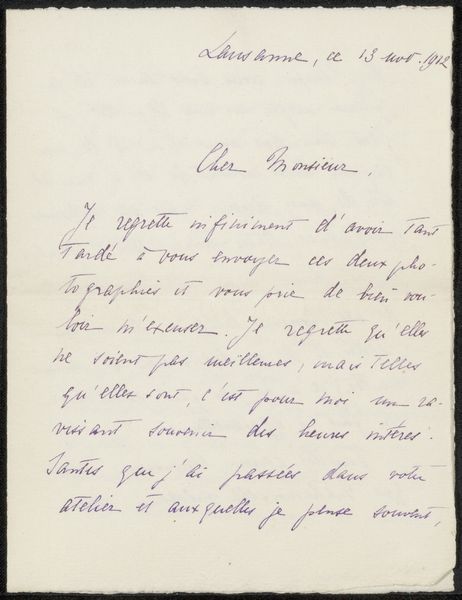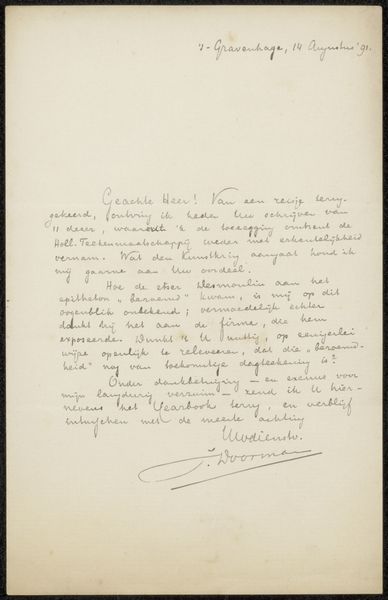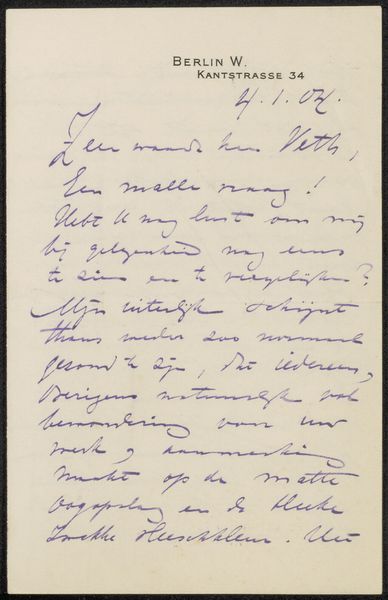
drawing, paper, ink
#
drawing
#
paper
#
ink
#
calligraphy
Copyright: Rijks Museum: Open Domain
Curator: Before us, we have a letter, penned by Léonce Bénédite sometime between 1866 and 1925. It's titled "Brief aan Philip Zilcken." Editor: The ink on paper, a small intimate scale…it feels so immediate. Like eavesdropping on a private conversation. The script is quick, flowing—almost frantic. Curator: Yes, the energy speaks to the practicalities of managing artistic communities. Bénédite was, after all, the first curator of the Musée Rodin. Correspondence would have been vital to organizing exhibitions and shaping the artistic landscape. Editor: Look at the letterhead itself! "Ministère de l'Instruction Publique et des Beaux-Arts," directing national museums. The very structure denotes art as entwined with governmental power and public education, doesn't it? It shows the material realities and institutional framing in which art is produced. Curator: Absolutely, it positions this letter not just as a personal note, but a document reflecting state patronage of the arts. He wouldn't only be relying on sales through galleries, or relationships between artists and their supporters. The state also plays a central part. Editor: It's also worth considering how a letter like this gains significance over time. Its value shifts, accruing new layers of meaning, from simply conveying an immediate message to becoming a historical artifact in itself. This piece gains a sense of significance now beyond the original intent of the writer. Curator: Indeed. It’s fascinating how something as quotidian as a letter can open a window onto a whole network of relationships, institutions, and historical forces that shaped art and culture. Editor: Agreed, seeing the materials used to craft what was meant to be a casual moment in time, highlights how the simplest methods can become precious portals through time and the political climate of art.
Comments
No comments
Be the first to comment and join the conversation on the ultimate creative platform.
